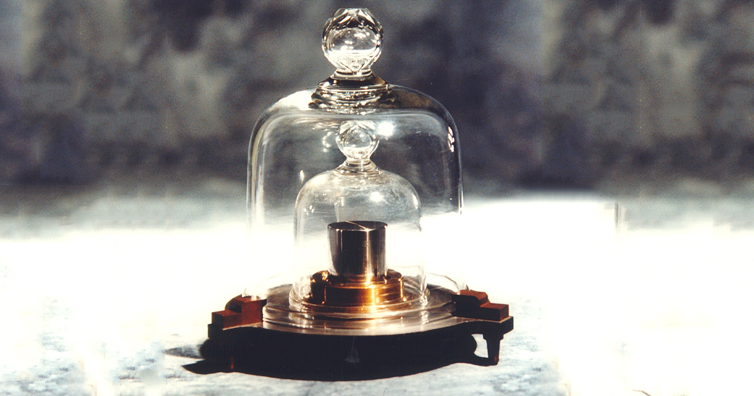Is there a reason to store an 127 years old metal cylinder in a vault? Well, if that cylinder is The Grand K, there’s exactly 1 Kg of reasons why you should keep it. To better understand why, let’s talk the basics of the metric system.
The base unit of mass for the Metric System, the Kilogram (Kg), is defined by the International Prototype of the Kilogram. But what defines the IPK? In other words, what defines the exact value of the Kilogram? How did they come up with this?
Well, the exact value of the Kilogram is determined by The Grand K and here’s it’s story: (the article continues after the ad)
The Grand K is a platinum and iridium cylinder that was forged in London and sent to Paris almost 130 years ago. While in Paris, scientists studied it and figured out that it was exactly one kilogram, around 2.2 pounds. Then, by international treaty in 1889, they declared it to be the international standard.
And that was it. For 126 years, this cylinder has been defining the kilogram. It is now stored in a high-security vault outside of Paris and, up until today, has been the standard against which every other kilogram on the planet has been judged. If something’s heavier than this, then it’s more than a Kg, if something’s lighter then it’s less than a Kg.
As of lately though, scientists have expressed their concerns that the cylinder is losing gas from inside its seemingly sold metal interior, thus becoming lighter. The problem is, there is still no way to define if indeed Le Grand K is losing weight or its replicas are… gaining weight, exactly because this cylinder is the one defining the Kg!
To solve this problem, scientists are now trying to come up with a different way to calculate a kilogram, more precise than a piece of metal forget 130 years ago but, until they do that, this is what we got.
If you like what you read, then you will definitely love this one: This “Cold Bank” Holds Something Far More Important Than Cash Or Gold


Photo: www.itsokaytobesmart.com
Widget not in any sidebars





